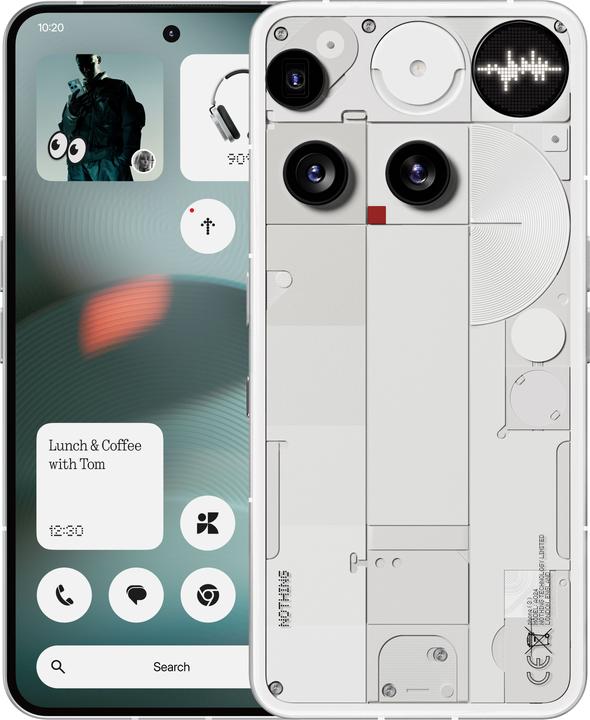

Review: the Nothing Phone (3) is hot on the heels of top-of-the-range smartphones
By releasing the Phone (3), Nothing’s going toe to toe with high-end smartphone manufacturers. The new smartphone boasts an eye-catching design and Glyph elements on the back.
The Glyph is dead, long live the Glyph Matrix! Nothing has put a small, round, pixelated display on the back of the Phone (3). Although it hasn’t won me over yet, I’m really happy with the cameras and hardware. The phone’s design certainly represents a nice change from the blur of mass-market handsets.
Glyph Matrix: from LEDs to a pixelated display
Nothing has parted ways with the Glyph for the Phone (3). The LEDs on the back of the manufacturer’s previous handsets were used to display notifications and could even light up in different signal sequences for different callers. On the Phone (3), these LED strips have given way to the Glyph Matrix – 489 little LEDs that together create a circular, pixelated display.
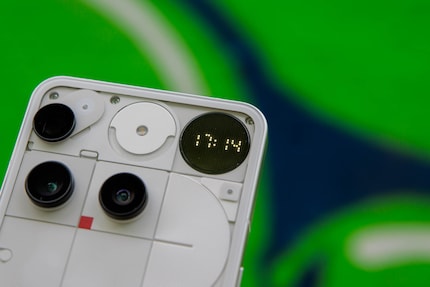
Among other things, this screen displays notifications. In the Glyph Matrix settings, you can select which apps are allowed to push them. You can also set different graphics for different events, contacts and notifications. For instance, you could define separate graphics to appear for chat messages and video calls coming through from the same app. You can even upload your own photos, although not all of these are suitable for the screen’s 489 pixels.
Now, that isn’t all the Glyph Matrix can display. If you take a photo using the self-timer, it’ll show you a countdown. The volume also appears on the Glyph Matrix when you adjust it. With the Glyph Torch, Nothing promises more light for video recordings. However, it doesn’t switch on automatically. What’s more, when you’re taking a video, the light settings only include an option to select the flash for constant lighting, and not the Glyph Torch.
Glyph Toys: some informative, some gimmicky
The Glyph Button on the back panel doesn’t strike you as a control element. You can’t feel it either. Even so, that doesn’t mean it’s unimportant. You use it to switch between Glyph Toys and activate their functions if available. In the Glyph interface settings, you can define which Glyph Toys appear in which order.
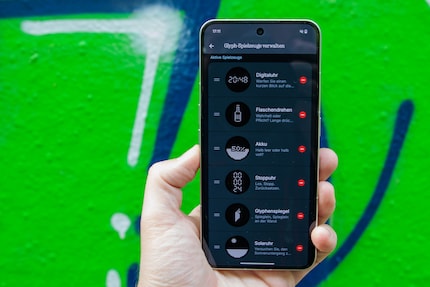
You can select the time, battery status, position of the sun or a spirit level. I’d look up at least some of that information on the regular. The thing is, I can already see it on my smartphone’s display – it’s no skin off my nose if I don’t have it on the back too. There’s also a stopwatch, but it can only ever be inexact. To start or stop it, you have to hold down the Glyph button, meaning there’s always a slight delay. Interestingly, I find it easiest to use the button with my right thumb. It doesn’t work as well with any other finger.
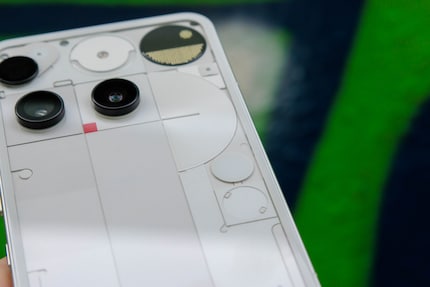
I’d imagined the selfie mirror would be a super practical Glyph Toy. Activating it causes the image from the main camera to appear in the Glyph Matrix. The pixelated picture gives you a decent idea of whether you’re in the frame when using the main camera to take a selfie. However, I still haven’t managed to take a photo while the mirror’s active – not with the Glyph button, not with the volume button and not with the camera app. Something hasn’t quite gone to plan there.
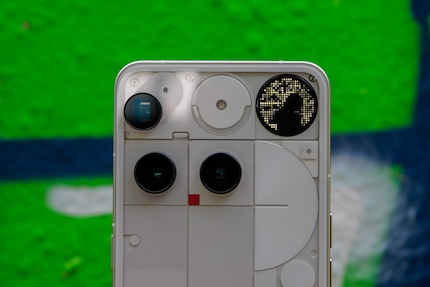
As the name would suggest, some of the Glyph Toys really are fun. On the one hand, there’s the spin-the-bottle game. On the other, there’s the Magic 8 Ball, which, like its real-life oracle counterpart, gives affirmative, neutral or negative answers. If you fancy it, you can even play a game of Rock, Paper, Scissors on the Phone (3). While none of these features are necessary, you might find them amusing.
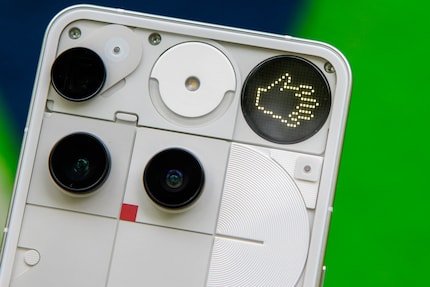
Since Nothing makes the resources needed to create Glyph Toys available to developers, there might be even more of them to choose from in the future.
Nothing OS doesn’t just set visual accents
The Phone (3) comes with Nothing OS 3.5 by default. The user interface is based on Android 15, boasting some apps and AI tools in addition to cosmetic changes. Nothing has announced it’ll be updated to Android 16 and Nothing OS 4.0 in quarter three. The Phone (3) is set to get five OS updates in total – that’s up to Android 20, as well as seven years of security updates.
AI for organising and searching, but not image processing
The Phone (3) also comes with the Gemini AI assistant. You can integrate ChatGPT too, but unlike other manufacturers, Nothing doesn’t provide any AI tools for image processing. Instead, it’s focused on its app Essential Space. Nothing’s given its last three smartphones an extra «Essential Button» to go with the app. If you press the button, the phone saves a screenshot into Essential Space. Pressing and holding the button allows you to record a voice memo, which is also saved in the app.
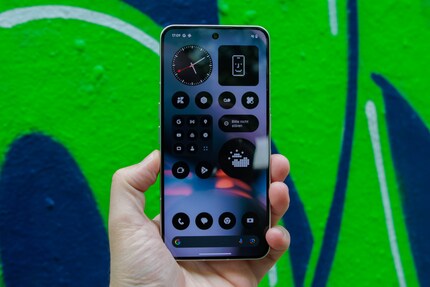
You can either use AI to organise these notes or do it manually. The AI also shows you summaries or prepares the contents of screenshots. I personally don’t have much use for this, but I do know people who use screenshots to take notes. The Essential Space might well be a hit with these folks.
The Essential Space comes with a new feature on the Phone (3). If you place the phone face down and press the Essential Button, it’ll start a recording. A sound wave graphic appears in the Glyph Matrix to show you that a recording’s in progress. You can mark important moments by hitting the record button, which the AI then highlights in its summary. Once the recording’s finished, you’ll find the whole clip plus the highlights in the Essential Space. The only snag is that the AI tool currently only summarises 300 minutes of audio per month.
If you swipe up from the bottom of the Nothing Phone (3) home screen, you’ll open both the app overview and Essential Search. Supposedly, the tool allows you to «search like never before», giving you the ability to search not only the web, but also your contacts, apps, calendar entries, messages, photos and files. Apparently, it also gives you real-time responses. Nothing plans to expand the search function even further.
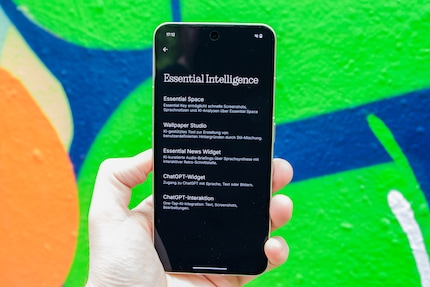
At the moment, however, Essential Search only really works well for apps, settings and widgets. Sometimes, you can also select which Google app you want to use to look up your search term. However, even with the GPS being active, I get stuff like restaurant suggestions for Hanover when I’m actually in Hamburg.
Four search engines are available for web searches and also serve as the standard when nothing else works. Even so, they show you exactly what Google or Bing would otherwise show you – including their AI tools. I don’t have enough personal data saved on my test device to judge the quality of the search. The thing is, I do have plenty of photos. Essential Search should’ve been able to find the images I was looking for, but instead, it disappointed me. All it manages to do is open the gallery app. Overall, there’s still untapped potential with this feature.
Only good cameras
Nothing has added a telephoto camera to the Phone (3) – something the previous handset didn’t have. Like the main, ultra-wide-angle and front cameras, it has a resolution of 50 megapixels. However, the sensor areas and apertures differ in size. The telephoto camera has a focal length of 70 millimetres, converted to 35 mm format. That’s around three times as long as the main camera, which uses 24 millimetres.
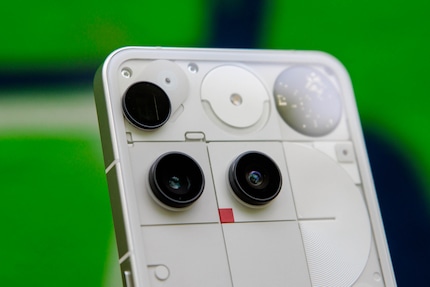
Main camera delivers more detail
Although its predecessor already had a 50-megapixel main camera, the Nothing Phone (3) has gone one better when it comes to the level of detail in images. This may not being noticeable on the smartphone’s display, but it’s clearly visible in 100-per-cent view, and certainly comes into play when you’re zooming into an image.
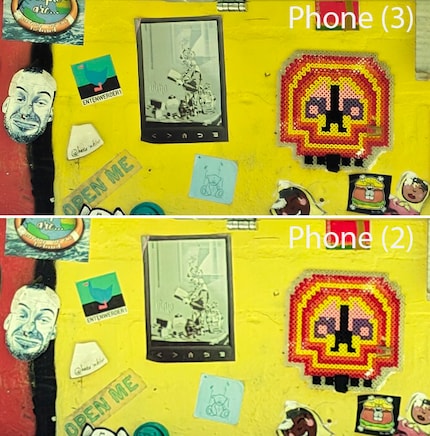
As far as colour’s concerned, I only notice minimal differences. The phone keeps its natural colour rendering.
If you prefer black and white shots or a retro look, the Phone (3) has matching filters.
If you’re taking photos in the dark, it’s worth using the night mode, even if it does only create minor improvements. But hey, they’re still improvements. The Phone (3)’s photos contain a higher level of detail than the Phone (2)’s. Plus, the colour rendering doesn’t just brighten the picture up, it also depicts the night.
The new kid on the block: the telephoto camera
While the main camera allows me to get the Cutty Sark right into the frame, the telephoto camera captures details without having to make any trade-offs. It delivers the same high level of detail and colour reproduction as the main camera.


What’s more, the telephoto camera’s always good for capturing different angles.
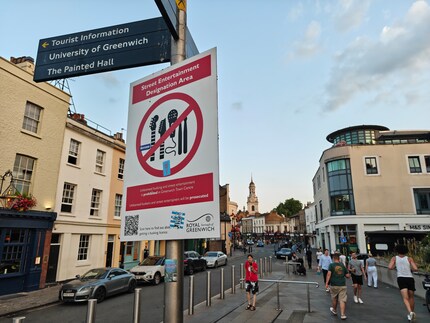
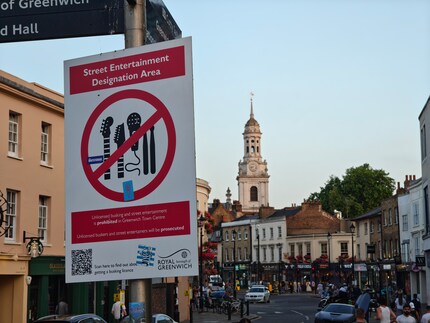
Ultra-wide-angle camera
The ultra-wide-angle camera’s impressive too. There’s just a slight bit of blurring in the corners, which is typical for such large focal lengths.

Selfies
The front camera also impressed me with its high level of detail, and isn’t affected by the backlight created by the sunset.
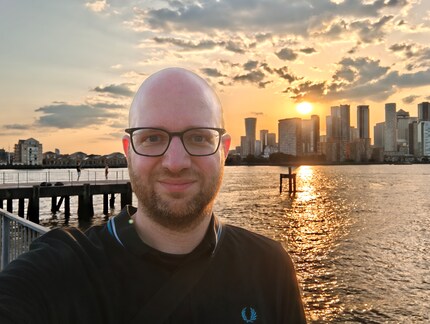
Comparable power to a top smartphone from 2024
Nothing has kitted out the Phone (3) with the Snapdragon 8s Gen 4. This is an upgraded version of Qualcomm’s top chipset from 2024, which ranks behind the Snapdragon 8 Elite. However, the top model from 2025 is more expensive. Nothing’s tried to nudge the Phone (3) into the high-end segment without slapping on a four-digit price tag.
The Phone (3) comes out significantly better in benchmark tests than the [Nothing Phone (2)](/page/nothing-phone-2-im-test-nicht-das-beste-smartphone-aber-das-coolste-28724. The Snapdragon 8s Gen 4 also clearly outperforms Nothing’s latest mid-range model, the [Phone (3a) Pro](/page/nothing-phone-3a-pro-im-test-ein-wenig-mehr-kamera-und-esim-36994. It’s on a par with the Snapdragon 8 Gen 4 for Galaxy smartphones – in the [S24 Ultra](/page/galaxy-s24-ultra-im-test-samsung-macht-sein-top-smartphone-noch-besser-32193, for instance – and unsurprisingly, trails behind the Snapdragon 8 Elite in the [Galaxy S25 Ultra](/page/galaxy-s25-ultra-im-test-wo-die-ki-hilft-und-wo-nicht-36943.
The battery’s bigger, but does it last longer?
A glance at the data reveals the first disappointing thing about the Phone (3): the battery. Although Nothing has equipped its latest handset with a 5,500 mAh battery, the capacity’s limited to 5,150 mAh in Europe for regulatory reasons. The only positive side effect of this is the battery supposedly being able to maintain its capacity level for longer. Besides, the manufacturer can still justifiably advertise that there’s been an increase compared to the 4,700 mAh of the Phone (2).
Nothing promises a battery life of up to two days. This should equate to 19 hours of additional YouTube viewing compared to the Phone (2). However, I measured a lower maximum value than the predecessor handset at full display brightness (9:07 hours instead of 10:50 hours with the Phone (2)). This mostly demonstrates the importance of circumstances and a phone’s settings when it comes to battery consumption.
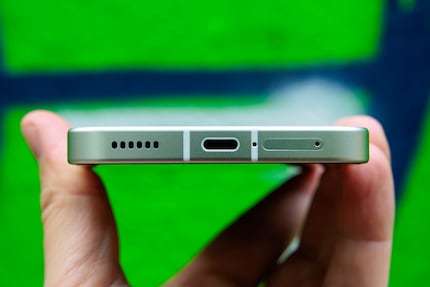
When charging, the Nothing Phone (3) draws up to 65 watts and takes about an hour to fully charge. With wireless charging, drawing up to 15 watts, it takes longer.
In a nutshell
A high-quality second-tier smartphone with that special something
Price-wise, you could peg the Nothing Phone (3) somewhere around the upper mid-range mark or in the category of newly affordable top-of-the-line models. Its camera setup actually ranks among the crème de la crème of smartphones, with each individual camera delivering good to very good image quality.
While the Phone (3)’s performance is «only» equivalent to that of a top handset from 2024, it’s still superb. It’s certainly not an argument against buying it. The phone’s attention-grabbing design, on the other hand, might represent either a plus or a drawback for you.
I’m still torn when it comes to the Glyph Matrix. Sure, Nothing’s used it to set accents. It also demonstrates that the company’s tried something new – an experimental quality I feel is lacking in other manufacturers. Still, that alone isn’t enough to leave me with a positive impression of the pixelated display. Since I rarely leave my phone lying with the screen face down, I can see most of the information without having to flip it over. So far, the Glyph Toys have turned out to be gimmicks I’m unlikely to use in the long term. Even so, I’m curious to see if more useful ones will emerge in the future.
Pro
- Every camera delivers good image quality
- More than enough power for day-to-day use
Contra
- Controversial design
- Glyph Matrix misses the mark (at least right now)

As a primary school pupil, I used to sit in a friend's living room with many of my classmates to play the Super NES. Now I get my hands on the latest technology and test it for you. In recent years at Curved, Computer Bild and Netzwelt, now at Digitec and Galaxus.



